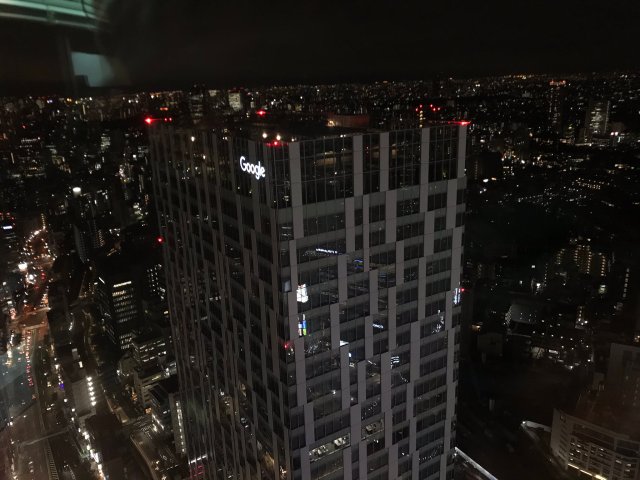
Two office skyscrapers look out over Shibuya together, but inside they’re worlds apart.
A lot has been written about Japanese working culture, where it’s standard practice to put in a lot of unpaid overtime, use your paid holidays on sick days, and only head off home after your boss has left the office.
This focus on prioritising group harmony over efficiency in Japanese workplaces is in stark contrast to the “work smarter not harder” mentality employed by many western companies, and to see it in practice, all you have to do is look up at Japan’s office skyscrapers at night.
That’s what Twitter user Yusaku Arai (@arai_yusaku) did one evening while out at Shibuya at around 6:00 p.m., and what he saw was pretty astonishing. He snapped a photo of the scene, which showed a building on the left where Japanese companies are located, and a building on the right, which houses a western company.
The office building on the left is the new 47-floor Shibuya Scramble Square, which is home to a number of big Japanese companies, including digital advertising company CyberAgent Inc., located on floors 19-23, and Mixi, an online social networking service, located on floors 28-36.
The building on the right? That’s the Shibuya Stream building, which is home to Google.
As you can see, the lights are shining brightly on practically every floor of Shibuya Scramble Square, whereas the Google headquarters, which takes up most of the 35-floor Shibuya Stream building, is so dark you can see the city lights reflecting off the windows, making it look almost transparent.
The reason why it’s so dark in there is because the tech giant has decided to allow its employees to telecommute until the end of June 2021. Opposite Google, though, we can see that telecommuting hasn’t quite caught on in Japan, despite Tokyo Governor Yuriko Koike urging workers to work from home as much as possible back when the pandemic first arrived in the country.
There are a number of reasons why telecommuting isn’t a practical option for a lot of Japanese companies, as the importance of face-to-face meetings and the intricate web of Japanese group dynamics can be hard to nurture and maintain through video calls — how can you trust someone if you don’t know whether they’re wearing business trousers or a fundoshi loincloth? — and there’s also the problem of workers needing to go in to the office to “sign” forms and authenticate work documents using personal seals known as hanko.
The Minister for Administrative Reform, Taro Kono, has made it his mission to abolish the need for personal seals in Japanese workplaces, which many believe to be an outdated practice. Kono is also determined to do away with fax machines, which still play a large role in offices as well.
Kono, and many others, believe that these types of traditional office practices are holding Japan back from truly embracing telecommuting and improving workplace efficiency. It’s not doing much to help the environment either, because as the photo of the two buildings in Shibuya shows, as long as people have to head in to the office every day and stay there until the time is right to head home, buildings in Tokyo will be guzzling up energy and lighting up the night until the last train departs out of the city.
Source: Twitter/@arai_yusaku via Hachima Kikou
Featured image: Twitter/@arai_yusaku
● Want to hear about SoraNews24’s latest articles as soon as they’re published? Follow us on Facebook and Twitter!